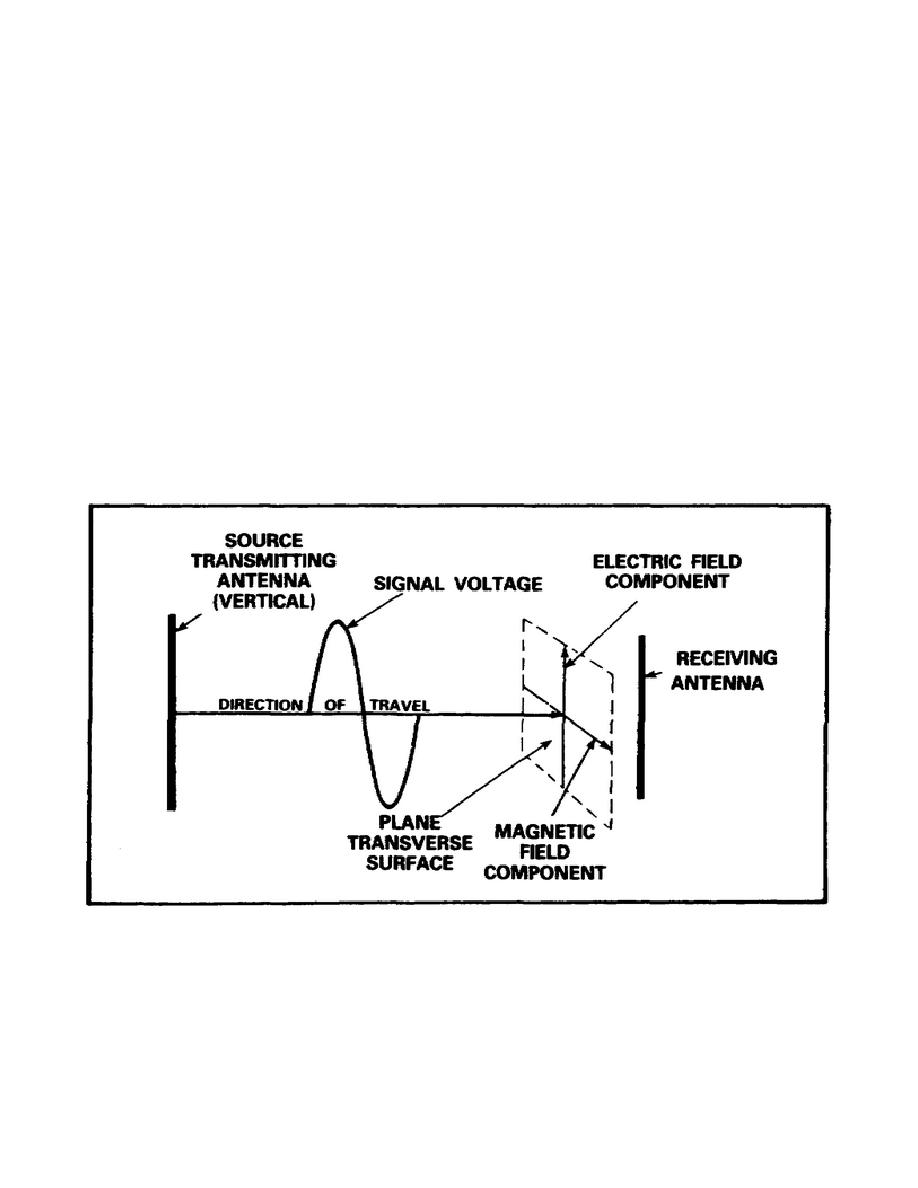
b. Antenna gain. The gain of an antenna depends primarily on its design. Transmitting
antennas are designed for high efficiency in radiating electromagnetic energy, while receiving antennas
are designed for the efficient pickup of electromagnetic energy. In radio links of multichannel systems,
transmission is needed between the transmitter and only one receiver. This situation makes it desirable
to radiate as much energy as possible in only one direction. The directional characteristics of antennas
increase the energy transfer in the favored direction and, at the same time, reduce the reception of
unwanted noise and signals from other directions. Antennas are designed to minimize energy losses and
maximize efficiency as radiators and receptors.
c. Radiation.
which is associated with the stored energy; the other is the radiation field, which moves out into space.
At the antenna, the intensities of both these fields are high. At a short distance from the antenna, and
beyond, only the radiation field remains.
(2) The electromagnetic field is responsible for the transmission and reception of
electromagnetic signals through free space. Radio waves consist of components of electric intensity and
components of magnetic intensity. Thus, radio waves are moving electromagnetic fields (figure 14).
Figure 14. Electromagnetic Wave Component.
d. Antenna radiation patterns.
26



 Previous Page
Previous Page
